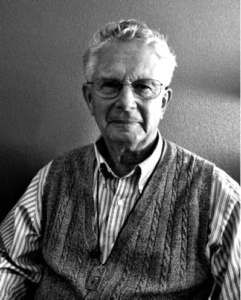 We are sad to hear that the esteemed poet Colin B. Douglas has passed away. Colin has been a valued voice in LDS poetry and criticism for several decades, and contributed a 19-part series “Being a Restorationist Writer” for this blog. We will publish more details in coming days. Here is post Colin wrote upon the publication of his poetry collection Into the Sun: Poems Revised, Rearranged, and New (Waking Lion Press) in 2019.
We are sad to hear that the esteemed poet Colin B. Douglas has passed away. Colin has been a valued voice in LDS poetry and criticism for several decades, and contributed a 19-part series “Being a Restorationist Writer” for this blog. We will publish more details in coming days. Here is post Colin wrote upon the publication of his poetry collection Into the Sun: Poems Revised, Rearranged, and New (Waking Lion Press) in 2019.
Into the Sun is my “collected poems, 1979 – 2019.”
The roots of these poems reach down to my earliest life experience, and the revelations of the Restoration give me to believe that life for all of us began eons before the present one, that the Archetypes live at a level of consciousness far deeper than even Carl Jung guessed. In this world, however, I come from the woods and waters of Western Washington, where my ancestry goes back ten thousand years through the Samish, a longhouse and canoe people. Although I am outwardly quite pale in the face, that heritage has shaped me inwardly in fundamental ways.
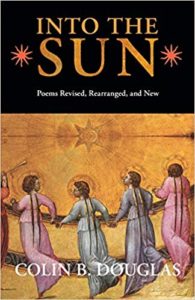 I discovered the larger world of art and literature while my family lived in a shack that my father and I had built with our own hands in a forest of fir, cedar, and alder on the shore of a lake near Anacortes, Washington, where I attended high school. The discovery came during the summer of 1959, shortly after I had turned fifteen, through a book titled How to Understand Modern Art, by George Alexander Flanagan, which I had found in Anacortes’s little Carnegie Library. My discovery had the force of a religious conversion, especially the chapter on the Surrealists and their painter and poet precursors, including Arthur Rimbaud and André Breton. Reading the excerpts from Rimbaud’s Illuminations was like mainlining from one adolescent subconscious into another. From the afternoon I read that chapter, I was determined to be a poet—a Surrealist poet, of course, hanging out in bohemian coffee houses, taking peyote, and consorting with like-minded women.
I discovered the larger world of art and literature while my family lived in a shack that my father and I had built with our own hands in a forest of fir, cedar, and alder on the shore of a lake near Anacortes, Washington, where I attended high school. The discovery came during the summer of 1959, shortly after I had turned fifteen, through a book titled How to Understand Modern Art, by George Alexander Flanagan, which I had found in Anacortes’s little Carnegie Library. My discovery had the force of a religious conversion, especially the chapter on the Surrealists and their painter and poet precursors, including Arthur Rimbaud and André Breton. Reading the excerpts from Rimbaud’s Illuminations was like mainlining from one adolescent subconscious into another. From the afternoon I read that chapter, I was determined to be a poet—a Surrealist poet, of course, hanging out in bohemian coffee houses, taking peyote, and consorting with like-minded women.
That plan was aborted when, at the age of sixteen, I underwent my second great conversion, a profound and lasting one to the restored gospel of Jesus Christ. Since then, a theme of my personal “individuation” (a term I later learned from Jung, who has influenced my thinking), and by extension of my writing, has been the labor of triangulating deep woods, bohemian coffee houses, and the Celestial Room.
My religious conversion required a prolonged restructuring (sanctification might be a better word) of my creative imagination. For nearly twenty years I was alienated (Providentially, I think) from the subconscious wellspring as I worked out the doctrines of the Restoration and their relationship, with the workings of the Spirit, to artistic endeavor. During that time, I learned to read with understanding and appreciation the work of more formalist poets, from Caedmon to Eliot and beyond, and I began to discover Baudelaire. (When I was eighteen, after my religious conversion, our high school French teacher advised me that as “a budding poet” I needed to study Baudelaire and Rimbaud as a corrective to the influence of the likes of Longfellow, fearing, I think, that I might not resist entrapment in what Clinton Larson called the “genteel tradition” in “Mormon” letters.) I found the English-language formalist and even free-verse poets not fully satisfying, however, despite the brilliance of their achievements, because they were to me as the twinkling waves and ripples on the surface of an infinitely deep ocean into which I had once plunged with Rimbaud and Breton. I longed inwardly for a return into those depths but found no entryway into them from “Mormon” culture.
I finally found my way into a master’s program in English at BYU, receiving my degree in 1978. In the course of that program, I discovered Ezra Pound, Gary Snyder, and Kenneth Rexroth and the potential for complexity of thought and both subtlety and intensity of emotion in their lucid, luminous, economical, conversational style, and Snyder’s and Rexroth’s use of imagery from my 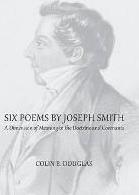 ancestral lands. With guidance from Robert Alter, I discovered the poetry hidden by the standard arrangement of the King James Bible, and from there I espied the poetic genius of Joseph Smith, especially as it manifests in the Doctrine and Covenants. With all of that working on me, I finally sat down at a manual typewriter to write as an adult, at the age of 35, in 1979. Having been taught by Pound and Eliot, and later E. D. Hirsch, the necessity of working within a tradition, I chose as my tradition first of all the scriptures of the Restoration, from the Old Testament through the Doctrine and Covenants, with the symbolism and ritual of the restored temple behind them. I determined to write openly and unapologetically from my experience and sensibility as a Latter-day Saint, however that might restrict my readership and prospects for publication. Having learned the value of some formal structure (Marden Clark—liberating form!), I set out to employ the flexible but guiding forms of the Psalms and the Song of Solomon. The earliest poems in Into the Sun (from “I Am Told of a Certain Tree” through “Wedding Songs,” excepting “A Separate Peace”) were written during that period, 1979 to 1989.
ancestral lands. With guidance from Robert Alter, I discovered the poetry hidden by the standard arrangement of the King James Bible, and from there I espied the poetic genius of Joseph Smith, especially as it manifests in the Doctrine and Covenants. With all of that working on me, I finally sat down at a manual typewriter to write as an adult, at the age of 35, in 1979. Having been taught by Pound and Eliot, and later E. D. Hirsch, the necessity of working within a tradition, I chose as my tradition first of all the scriptures of the Restoration, from the Old Testament through the Doctrine and Covenants, with the symbolism and ritual of the restored temple behind them. I determined to write openly and unapologetically from my experience and sensibility as a Latter-day Saint, however that might restrict my readership and prospects for publication. Having learned the value of some formal structure (Marden Clark—liberating form!), I set out to employ the flexible but guiding forms of the Psalms and the Song of Solomon. The earliest poems in Into the Sun (from “I Am Told of a Certain Tree” through “Wedding Songs,” excepting “A Separate Peace”) were written during that period, 1979 to 1989.
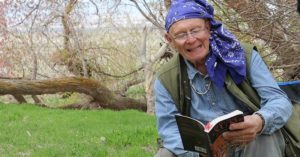 Although I was confident (and still am) that what I produced was fully defensible by scriptural precedent, I was aware from the first that I was pressing beyond the boundary of popular and orthodox “Mormon” sensibility. I was an editor in the Church Curriculum Department at the time I began to write, and our Provo ward’s Gospel Doctrine teacher, the son of a popular Latter-day Saint author, had just warned us against reading the Song of Solomon, as it was, in his words, “pure pornography.” Given the thinly veiled and not so thinly veiled eroticism of some of even my earliest poems, I was so apprehensive of publishing them that I made my first submissions (to Sunstone, when Dennis Clark was poetry editor there) under a pseudonym.
Although I was confident (and still am) that what I produced was fully defensible by scriptural precedent, I was aware from the first that I was pressing beyond the boundary of popular and orthodox “Mormon” sensibility. I was an editor in the Church Curriculum Department at the time I began to write, and our Provo ward’s Gospel Doctrine teacher, the son of a popular Latter-day Saint author, had just warned us against reading the Song of Solomon, as it was, in his words, “pure pornography.” Given the thinly veiled and not so thinly veiled eroticism of some of even my earliest poems, I was so apprehensive of publishing them that I made my first submissions (to Sunstone, when Dennis Clark was poetry editor there) under a pseudonym.
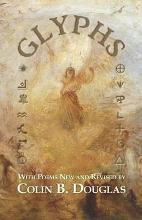 After 1989 (excepting one “belated cowardice” published in Irreantum, “Prayer,” in 2006), it seemed time to take a different direction. I withdrew for a prolonged period from attempts to publish as I finally began to work back toward the oceanic depths that had seemed closed to me since 1961. I determined to practice what I had learned from Baudelaire and his poetic descendants, and later from Keats and his “negative capability,” about receiving the words that come from a deeper place (without letting go of the Iron Rod to stray into automatic writing, which I regard as psychologically and spiritually destructive and artistically unproductive). In these later works, the more “surrealistic” ones that have come of that deeper diving, I am conscious of having gone fathoms further beyond popular “Mormon”
After 1989 (excepting one “belated cowardice” published in Irreantum, “Prayer,” in 2006), it seemed time to take a different direction. I withdrew for a prolonged period from attempts to publish as I finally began to work back toward the oceanic depths that had seemed closed to me since 1961. I determined to practice what I had learned from Baudelaire and his poetic descendants, and later from Keats and his “negative capability,” about receiving the words that come from a deeper place (without letting go of the Iron Rod to stray into automatic writing, which I regard as psychologically and spiritually destructive and artistically unproductive). In these later works, the more “surrealistic” ones that have come of that deeper diving, I am conscious of having gone fathoms further beyond popular “Mormon”
sensibility, if not beyond that of our literary establishment. In defense of that, as I have searched deeper into the revelations given through Joseph Smith, I have found a theological justification, even imperative, for heeding the voice of the individual subconscious—but the explanation of that is for another time; I submit here only that the key is in D&C 93, and I refer the reader to the “Author’s note” at the back of Into the Sun for further explanation of my purpose and method and how these poems might be approached.
LIKE A DEER HE COMES TO ME
Take, eat: this is my body.
—Mark 14:22
Like a deer he comes to me,
Parting the ferns,
Like a deer with bright antlers.
I chase him across meadows,
Beside streams I pursue him,
And he does not weary;
But in the thicket he surprises me,
He lets my arrow pierce him.
He gives me of his flesh at evening,
And in the bright morning
Like a deer he comes to me.
FROM “A BOOK OF LAMENTATIONS”
How doth the city sit solitary
—Lamentations 1:1
1
How doth the City sit solitary
One white arm thrust out of the broken plaza
Grasping toward the sky
Deserted temples surround the plaza
Darkness within their portals
Pillars white as the arm
The City lies spread behind the mind
The river spread out, dark water
Heads bobbing toward the sea
Deserted piers, warehouses, factories along the riverbanks
Small shops where masks once were made
For processions of acrobats and soothsayers
Dancing through the boulevards
To the unrestrained songs of murdered dogs
While copulating in the shadow of the shrine
Couples as ardent as butterflies’ wing dust
Left the imprints of their bodies on the dissolving marble
And where is the girl who opened the cupboard below her breasts
To let spill the glyphs of Abraham’s last Apocalypse
An unidentified finger tracing one by one
The bones of her spine and the knobs of the cupboard doors
To lie with her the empty robe of the high priest
Would sacrifice one by one
The threads of which the soothsayer by the river wove it
And therein lies the reason why the soothsayer’s liver is poured upon the earth
His grief greater than that of a cedar tree bereft of its bones
As it reaches futilely for the hand through the veil
And the head of the king
Scraps of yellowed newspaper sewed to his tongue
Grins through the shattered windshield of a decaying automobile
At rest in the dry grass that grows between the legs of a broken statue
Of the girl who lost the glyphs
The king and the soothsayer yearn to be obeyed again
By the refugees scattered across the plain
Who hang their cooking pots on tripods constructed of broken windshield wipers
And think of the faces that saw through the veil
The wedding ceremony of the girl who lost the glyphs
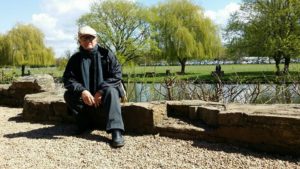 Colin Blaine Douglas was born in 1944 and brought up in Western Washington; is an enrolled member of the Samish Indian Nation; became a Latter-day Saint at the age of sixteen; served in the Brazilian Mission 1964–1966; served in Military Intelligence in the Regular Army and the Utah National Guard, retiring as sergeant first class; attended the University of Washington as a journalism major and received a bachelor’s degree in psychology and a master’s degree in American literature at Brigham Young University; was employed for twenty years as an editor in the Curriculum Department of The Church of Jesus Christ of Latter-day Saints; edited and reported for the Magna Times newspaper for two years; with the former Linda Jean Wells, to whom he was married in 1969, is the father of seven; has resided in Utah since 1971; as literary favorites names Latter-day Saint scripture (including the Bible), Arthur Rimbaud, André Breton, Ezra Pound, T. S. Eliot, Kenneth Rexroth, Gary Snyder, and Philip Lamantia; is the author of First Light, First Water; Glyphs (AML Poetry Award finalist, 2015); Division by Zero; Six Poems by Joseph Smith, and Into the Sun (AML Poetry Award finalist, 2019).
Colin Blaine Douglas was born in 1944 and brought up in Western Washington; is an enrolled member of the Samish Indian Nation; became a Latter-day Saint at the age of sixteen; served in the Brazilian Mission 1964–1966; served in Military Intelligence in the Regular Army and the Utah National Guard, retiring as sergeant first class; attended the University of Washington as a journalism major and received a bachelor’s degree in psychology and a master’s degree in American literature at Brigham Young University; was employed for twenty years as an editor in the Curriculum Department of The Church of Jesus Christ of Latter-day Saints; edited and reported for the Magna Times newspaper for two years; with the former Linda Jean Wells, to whom he was married in 1969, is the father of seven; has resided in Utah since 1971; as literary favorites names Latter-day Saint scripture (including the Bible), Arthur Rimbaud, André Breton, Ezra Pound, T. S. Eliot, Kenneth Rexroth, Gary Snyder, and Philip Lamantia; is the author of First Light, First Water; Glyphs (AML Poetry Award finalist, 2015); Division by Zero; Six Poems by Joseph Smith, and Into the Sun (AML Poetry Award finalist, 2019).
You can read Colin’s “Being a Restorationist Writer” series for this blog.
Reviews of Into the Sun:
“Utilizing traditional Latter-day Saint language, Colin Douglas breaks on thru to an authentic spirituality that knows no sect or dogma. Each poem in this collection offers a glimpse of Colin’s search for his own soul-voice. And through it all, he never fails to share his illuminations with the reader.”
–Alex Caldiero,
Sonosopher & polyartist, Sr. Artist in Residence at UVU
“Into the Sun has a little bit of everything: pastoral, psalms, prose poems, lamentations, surrealist parables, canticles to the beloved, etc. Colin Douglas is a seeker: one who follows the thread wherever it leads him, sometimes to deliverance, sometimes deeper into the labyrinth. Above all else, this book will keep you on your toes!”
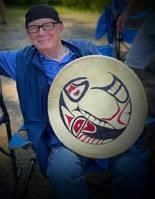 –Lance Larsen,
–Lance Larsen,
Poet laureate of Utah (2012-2017), Author of What the Body Knows
“The poems often revisit and renew old themes, yet here each poem has been crafted into a final form. One can argue that the poems are too many when you have over thirty discussing alphabets/letters/glyphs, or when you have about ten featuring crystals and ten featuring spheres, making about five with crystal spheres, at least two of which grow inside someone’s breast. It’s not that I can easily declare one of these poems superior to another—each poem is a crafted marvel worthy of our attention. It’s more that this is a collection to spend years reading (rather than the ten days I spent) in order for them to layer rather than suffocate.”
–Eric W. Jepson’s review of Into the Sun, published in Dialogue.

Here is a message that Colin sent to the AML Facebook page in 2015, summarizing his life and artistic approach.
HI! My name is Colin, and I don’t know if this is the right meeting. So far as I can tell, I am the pre-eminent Mormon Surrealist poet of official Native American extraction over the age of seventy writing in Utah at this time. I have been lurking for about forty years at the edges of the MoLit conversation and occasionally trying to break in, but it has been like trying to break into the conversation at a reunion of my wife’s relatives—I stick up a finger and open my mouth, but nobody notices, and so I close my mouth and wait for another moment; or I do get out a sentence or two, and everyone stops talking and looks at me for a moment with expressions that say “What color is the sky on your planet?” and then returns to talking to each other about what makes sense to them.
No one out there has noticed, but I have recently had published a “slender volume of verse”: First Light, First Water: Poems and Prose Poems by Colin B. Douglas (Waking Lion). You can find it on Amazon.com. My purpose here is not only to puff my little book but also to look for friends. To those ends I want to explain some things about myself as a writer, that book, and what I am doing with my current writing season.
In the summer of 1959, when I was an introverted, schizoid, fifteen-year-old desperately seeking epistemological certainty and an identity and living literally in a shack in the woods with my family in Western Washington, with a five-mile walk each way to and from the little Carnegie Library in town, I quite unexpectedly encountered some selections from the poems of Arthur Rimbaud and André Breton, which overwhelmed my adolescent imagination. In direct connection with that discovery, I also discovered “Howl” and the Beat poets, and I was sure that I had found my identity and a working substitute for epistemological certainty. At sixteen, my life plan was to find my way to Venice, California, hang out in Beat cafés, take peyote, write Surrealist poetry, and consort with like-minded women. While I was still sixteen, however, the Mormon missionaries came to our door, and you could say that I was overcome by a vision on the road to Venice. It was a profound and enduring conversion—but so was the conversion to the kind of poetry that Rimbaud and Breton wrote. Through the years, bridging the gap between those two domains of my imagination has been my chief problem as a writer. The division is evident in First Light, First Water, which includes poems that were first published in Sunstone and Dialogue more or less a generation ago, when Dennis Clark was poetry editor at Sunstone and Mary Lythgoe Bradford was at Dialogue, and also a few in the Ensign. All of my previously published poems, the ones in the first section of the book, come from the more obviously “Mormon” domain; those in the second section from the region that is still haunted by the Illuminations of Rimbaud. For my current writing season, I have thrown myself with abandon down that latter rabbit hole. There is no precedent that I know of for this kind of thing in Mormon letters. I would not even try to explain to my fellow ward members this stuff that their Gospel Doctrine teacher has been writing, and even in the Mormon literary establishment I have found little interest even in the more accessible experiments with Mormon language, imagery, and spiritual experience in biblical form. My fans so far are my wife, my publisher, a novelist living in Magna, my actress daughter, and perhaps a young lady who told me I need to come back after I read at the Enliten Bakery last Thursday. You can find a few of my poems posted on my Colinbdouglas page on Facebook.